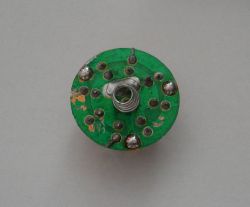Hello
In the case of a single led diode, visit: http://kalkulator.majsterkowicza.pl/oblicz/rezystor_do_LED - you can choose a resistor for the voltage and led and after the trouble.
In the case of one diode, I had no problem. When I was to connect 9 LEDs, at 5V from the computer's power supply, a problem appeared. I don't know what to use the resistor.
The LED flashlight has 9 diodes which were powered by 3x1.5V = 4.5V with voltage. I have efficient 5V from the computer power supply.
So how to calculate the value of the resistor so that the diodes last longer? Or maybe it's better to power them with a stabilizer - by setting yourself 4.5 V or less?
In the case of a single led diode, visit: http://kalkulator.majsterkowicza.pl/oblicz/rezystor_do_LED - you can choose a resistor for the voltage and led and after the trouble.
In the case of one diode, I had no problem. When I was to connect 9 LEDs, at 5V from the computer's power supply, a problem appeared. I don't know what to use the resistor.
The LED flashlight has 9 diodes which were powered by 3x1.5V = 4.5V with voltage. I have efficient 5V from the computer power supply.
So how to calculate the value of the resistor so that the diodes last longer? Or maybe it's better to power them with a stabilizer - by setting yourself 4.5 V or less?






